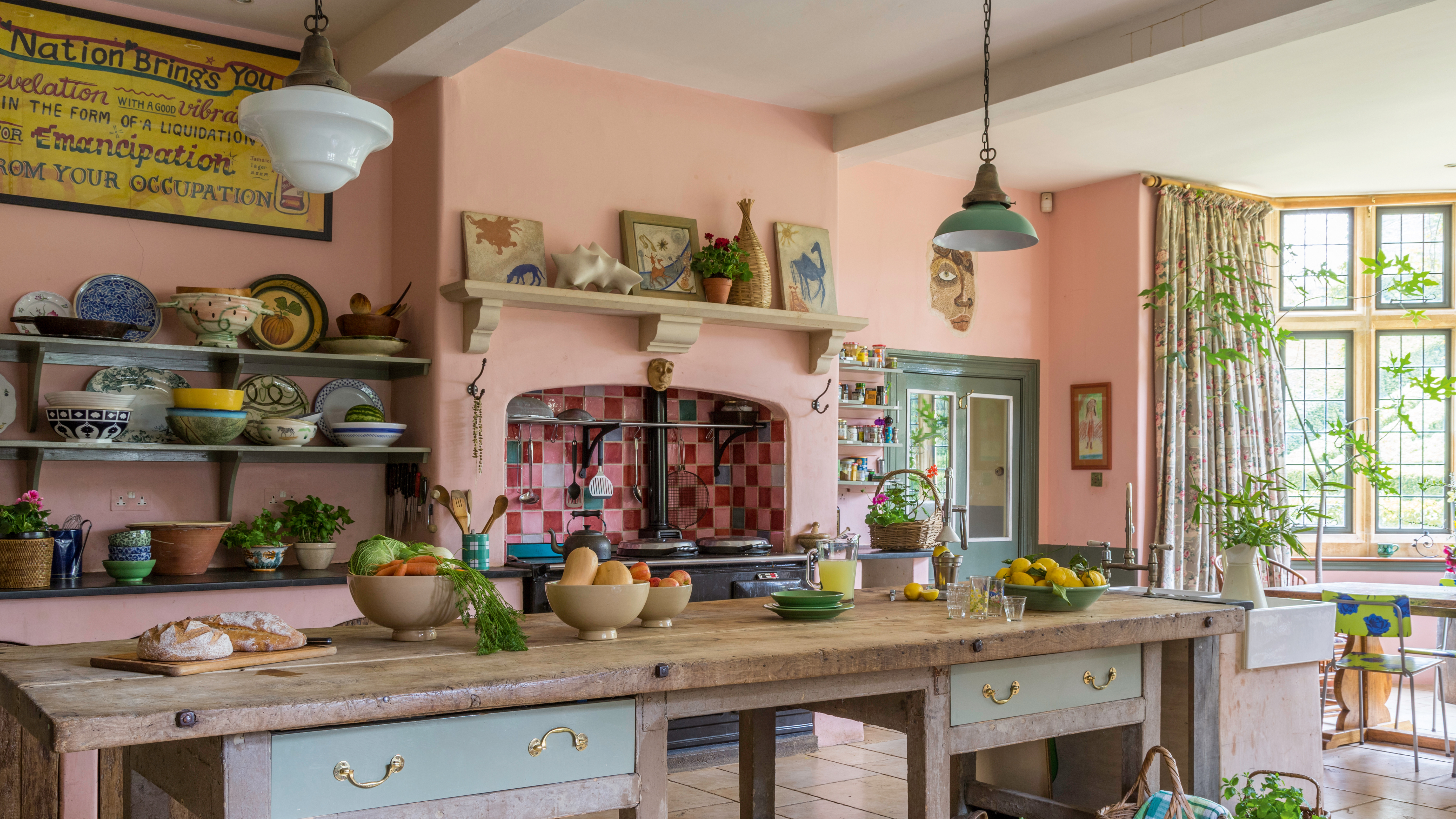
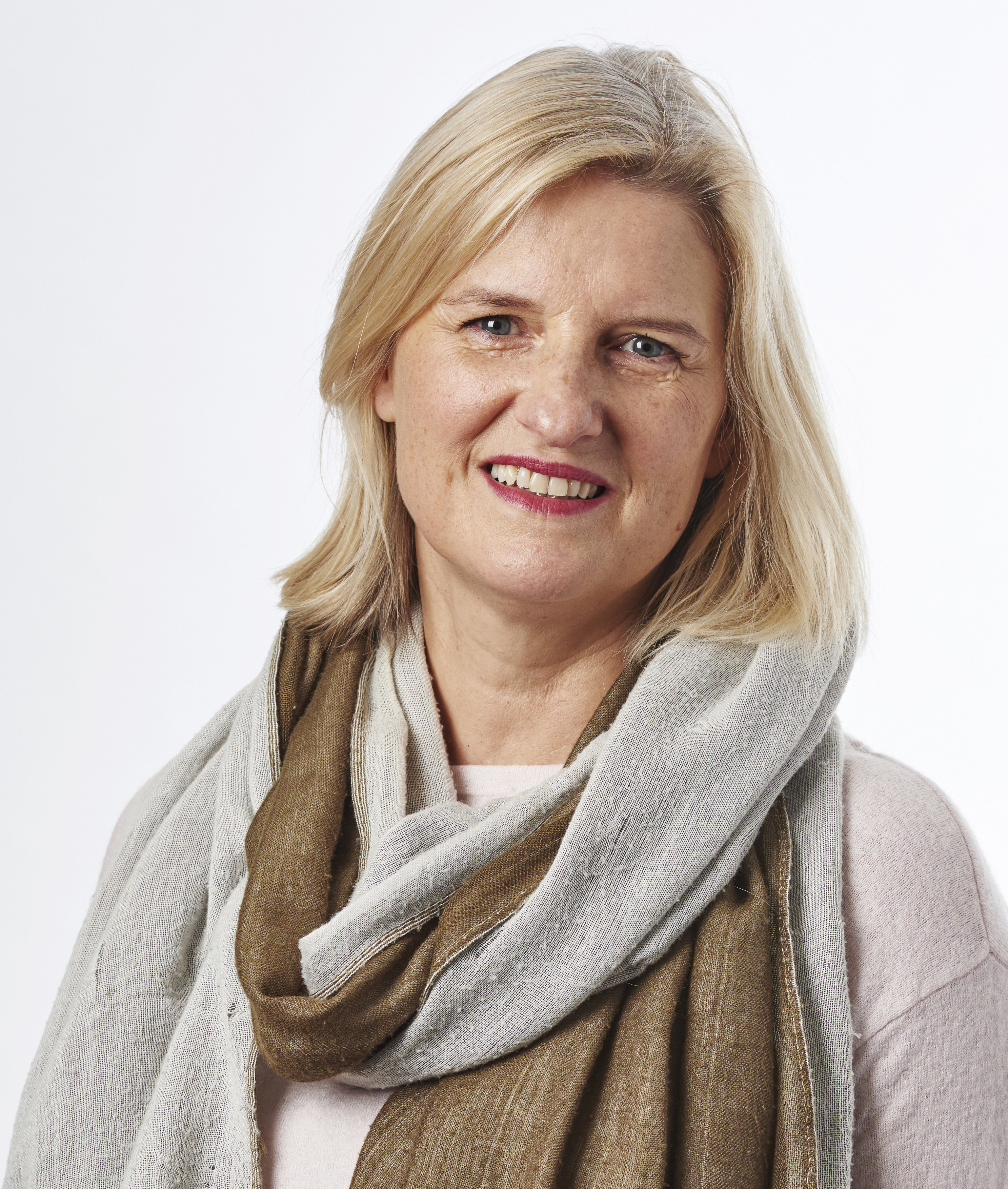
Need inspiration for a period transformation on a grand scale? This unusual home is one of our favourite real home transformations. Read on to find out how its owner embraced its history and used bold colours, strong statement furnishings and some dramatic stone sculptures to bring it up to date.
And don't miss our extension pages for plenty of practical advice and inspiration.
Project notes
Owner Rosie Pearson lives here, and co-curates On Form, a biennial sculpture exhibition at the property (onformsculpture.co.uk)
Property Asthall Manor in the Windrush Valley, Oxfordshire, built in the early 1600s in Cotswold stone with many additions over the centuries. It served as a convalescent home during the First World War
What she did Rosie added a front drive, relocated a staircase, added a new bathroom and extended the kitchen. The garden has been landscaped
Looking for somewhere a bit special to turn into a home for herself and two young daughters, Rosie Pearson called off the search when she found Asthall Manor, a solid Cotswold home in rolling, rural Oxfordshire.
It had been home to the infamous Mitford sisters and their parents in the roaring 1920s, and their presence – and the distinctive blue woodwork paint they chose – still makes itself felt around the house.
Although Rosie loved the manor house from the start and says she could picture good things happening here, she admits it wasn't terribly welcoming or cosy, in fact, it was quite the opposite. So once the sale went through that's what she started to put right.
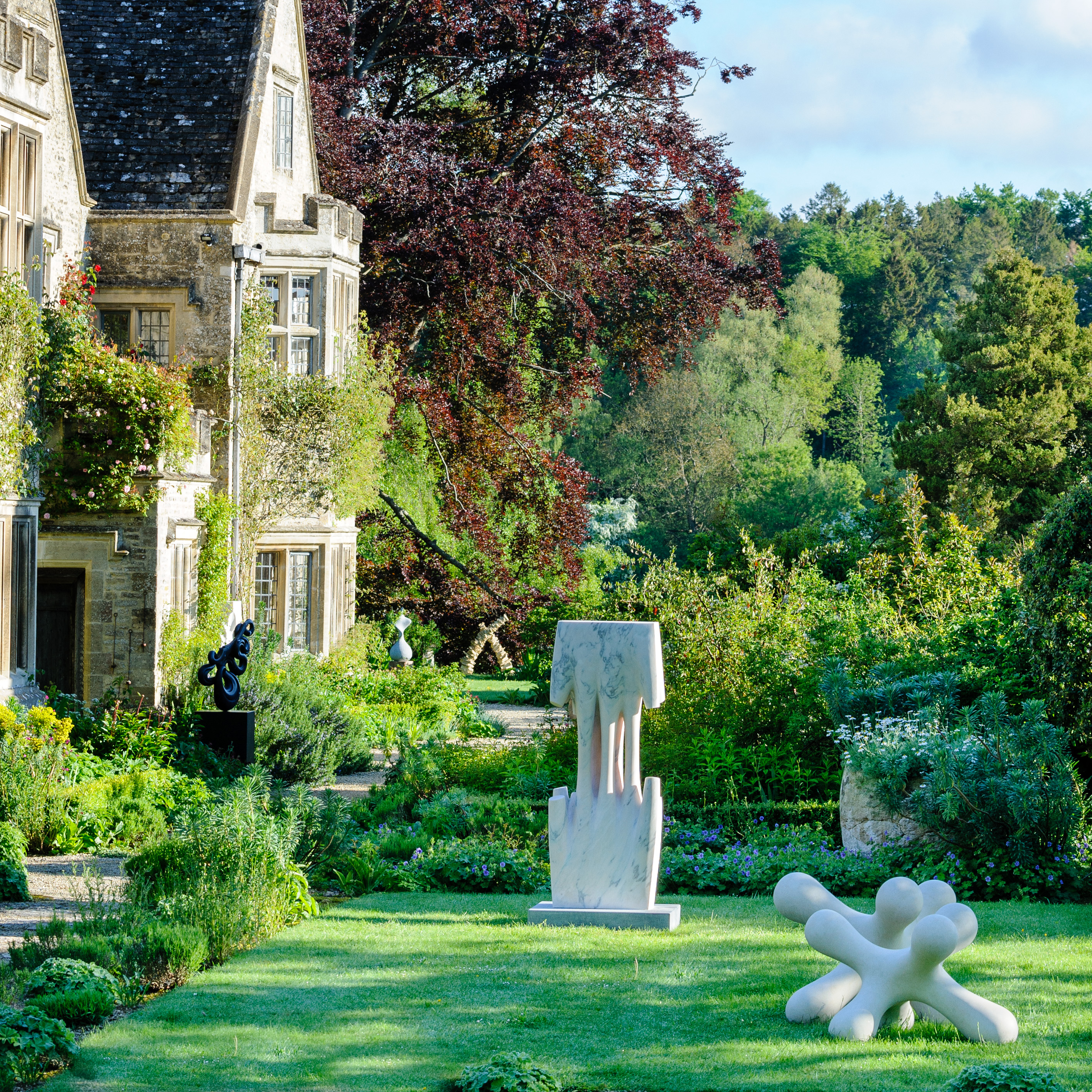
Asthall Manor in the Cotswolds is the glorious setting for On Form, a biennial stone sculpture exhibition. The house in Oxfordshire's Windrush valley was built in the early 1600s and was the 1920s home of the Mitfords
Rosie and her daughters moved into the flat above the ballroom and started to turn the house into something that would work for family life.
There was a lot to do, as Rosie explains: ‘The house was rather stark and foreboding, the garden was overgrown and there wasn’t even a front gate – its reclusive previous owner preferred it that way.
Join our newsletter
Get small space home decor ideas, celeb inspiration, DIY tips and more, straight to your inbox!

In the kitchen’s new bay window, an Australian fruitwood table is teamed with bold, contemporary chairs. The two sculptures on either side of the window are by Anthony Turner. At the head of the table, marmalade cat Paddington snoozes on an early-20th-century bamboo chair, one of four Rosie unearthed in an antiques shop; for similar, try Raj Tent Club The Bannermans' angled knot garden can be seen through the window
‘Before I even got an architect, I was put onto Julian and Isabel Bannerman, known for their garden designs but brilliant with interiors too, and they helped me come up with a plan, along with architect Robert Franklin.’
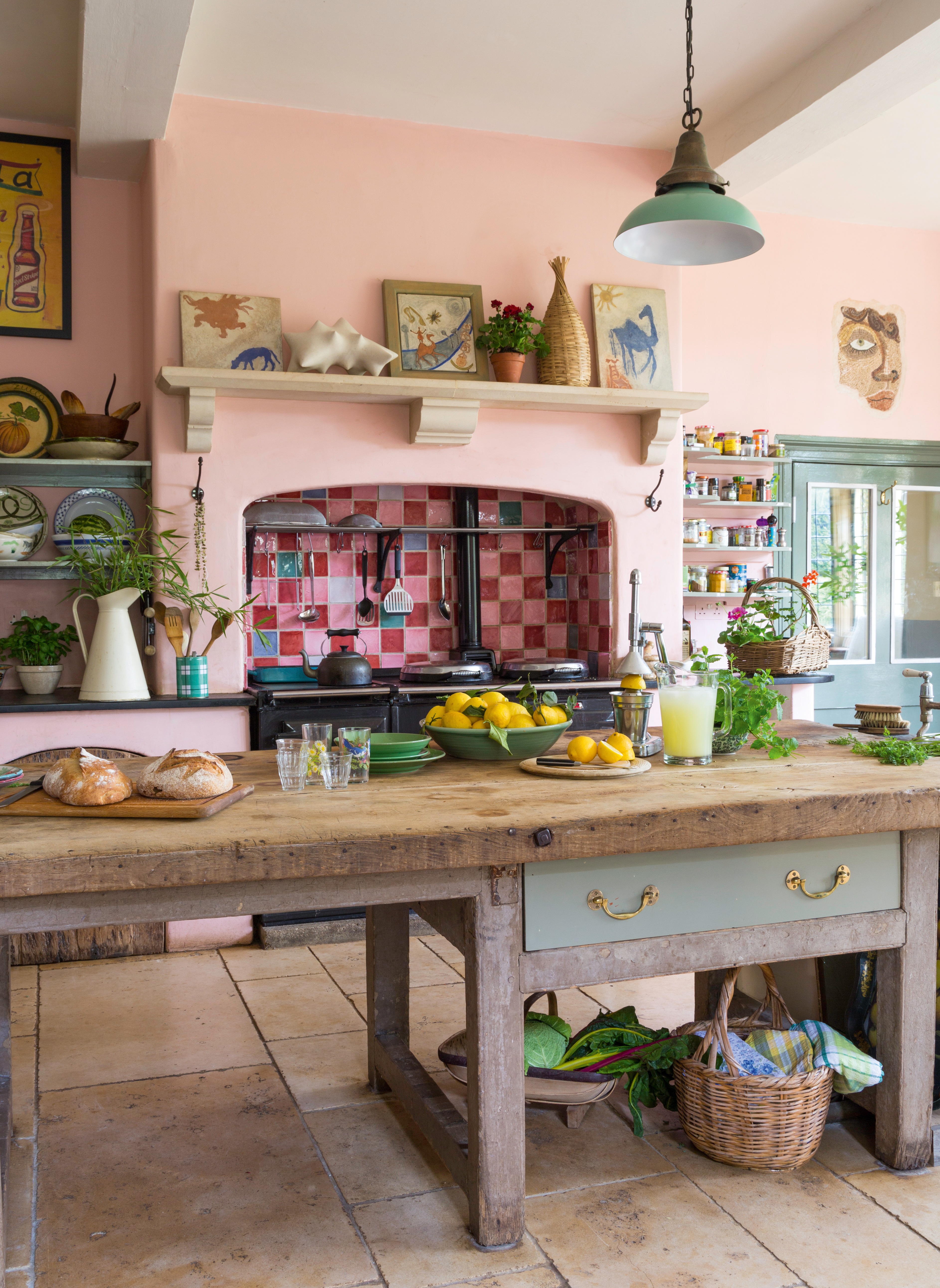
Rosie extended the kitchen, adding the bay window and adapting a cook’s table from Badminton House to make a huge preparation space. On the shelf above the Aga are a sculpture by Guy Stevens and frescoes by Muirne Kate Dineen, while the face mosaic on the wall is by Rosie
First an unsightly single-storey extension was demolished at the back of the house. In its place, a sheltered outdoor seating area now overlooks an angled knot garden designed by the Bannermans to make the most of a steep slope facing the back of the house.
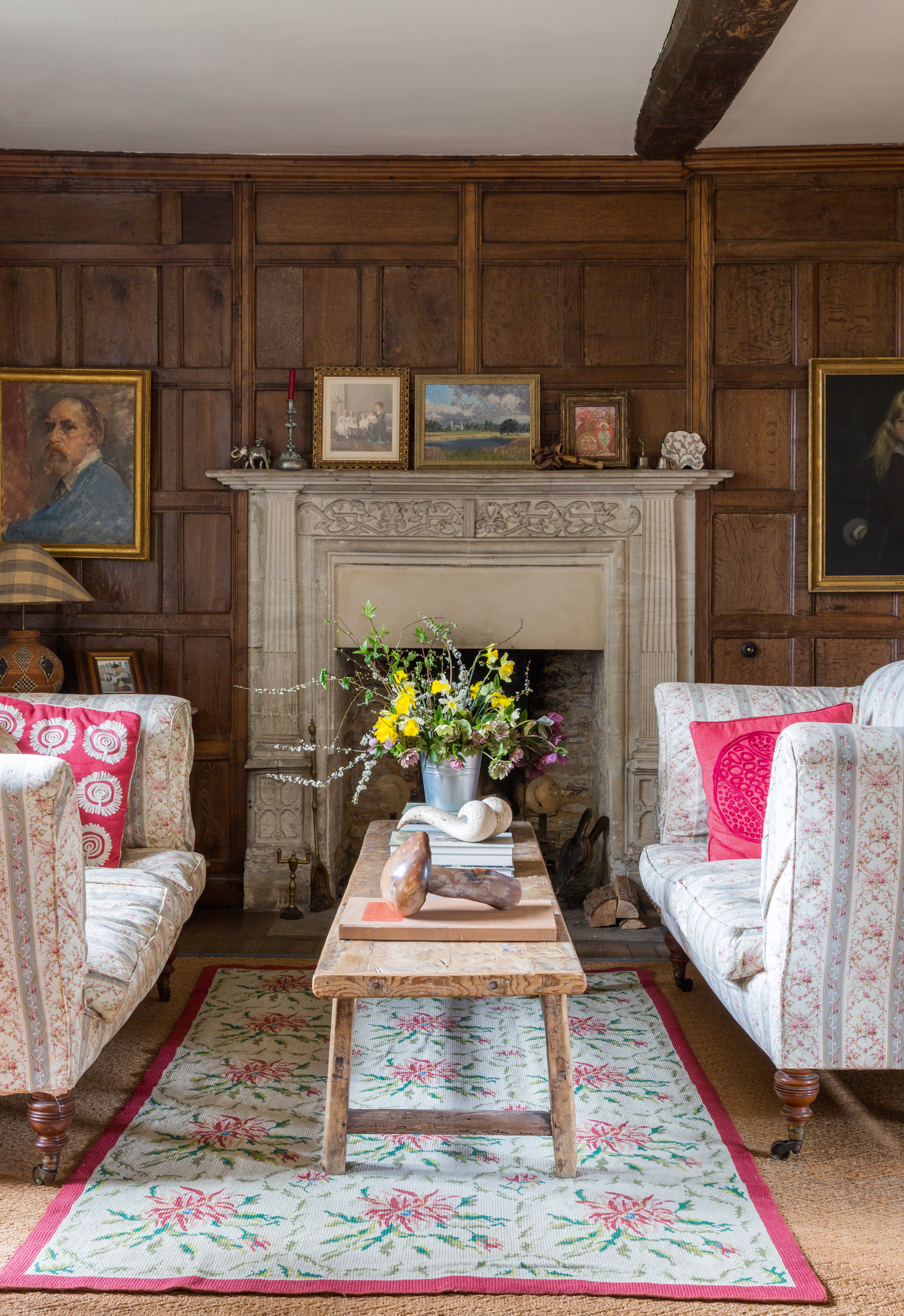
This oak-panelled room would once have been the manor’s main hall. The Howard sofas are from Hares Antiques in Cirencester. On the table is a mushroom sculpture by Ben Russell, and one by Luke Dickinson. The Portuguese rug was Rosie’s mother’s
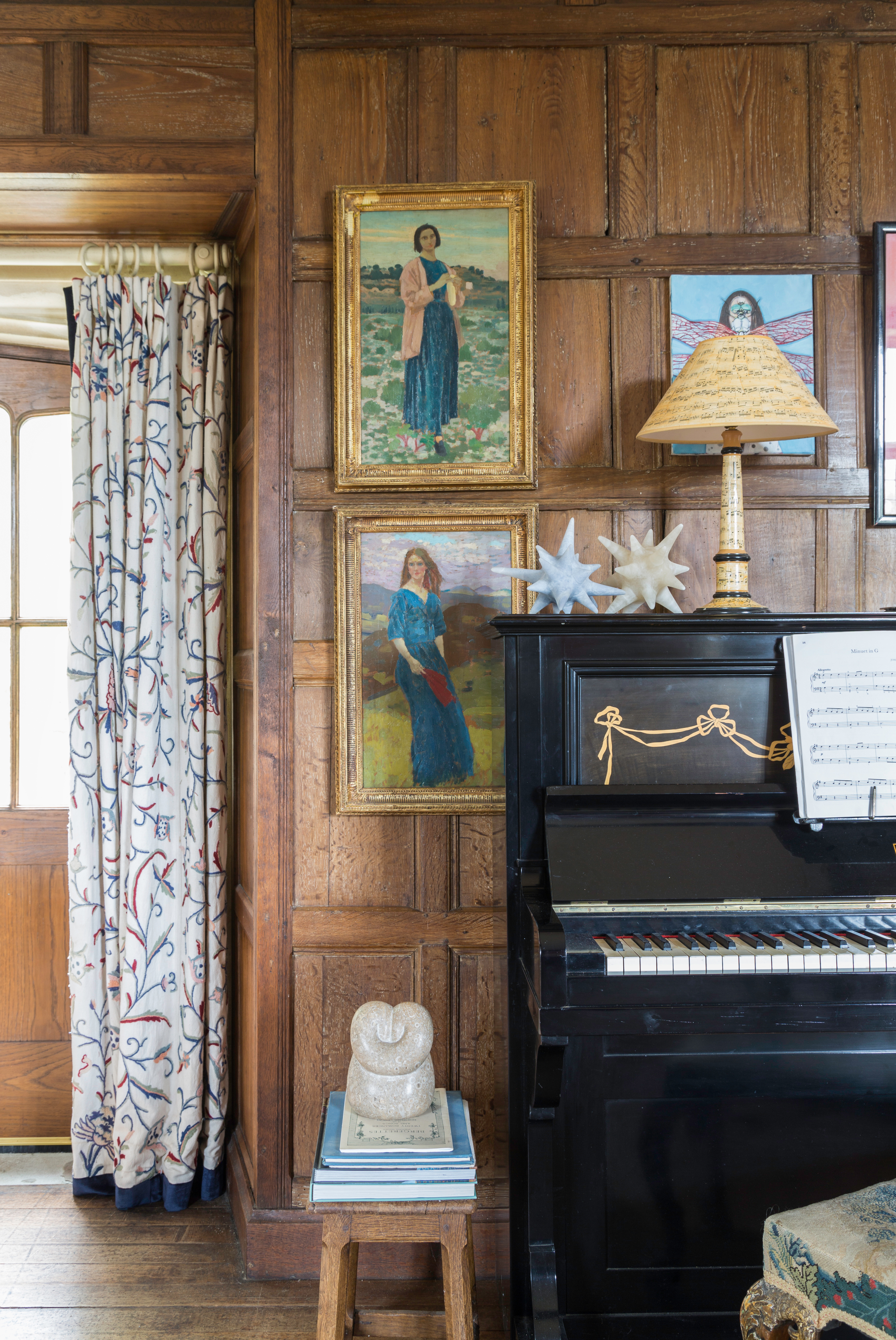
On the piano are two pieces by Guy Stevens, while on the stool is a work by Anthony Turner. The tapestry stool, just seen, belonged to Rosie’s mother
‘I was all for leaving the garden until after we’d finished the house, but Isabel and Julian convinced me it was far better to start the garden at the same time.’
So while the garden was taking shape, a poky kitchen was being transformed into a warm, bright family space, with Robert Franklin’s plans to extend it and bring in more light. A warren of back rooms were opened up, the back stairs were relocated, and the kitchen was extended out into the garden, with a dramatic oversized bay window.
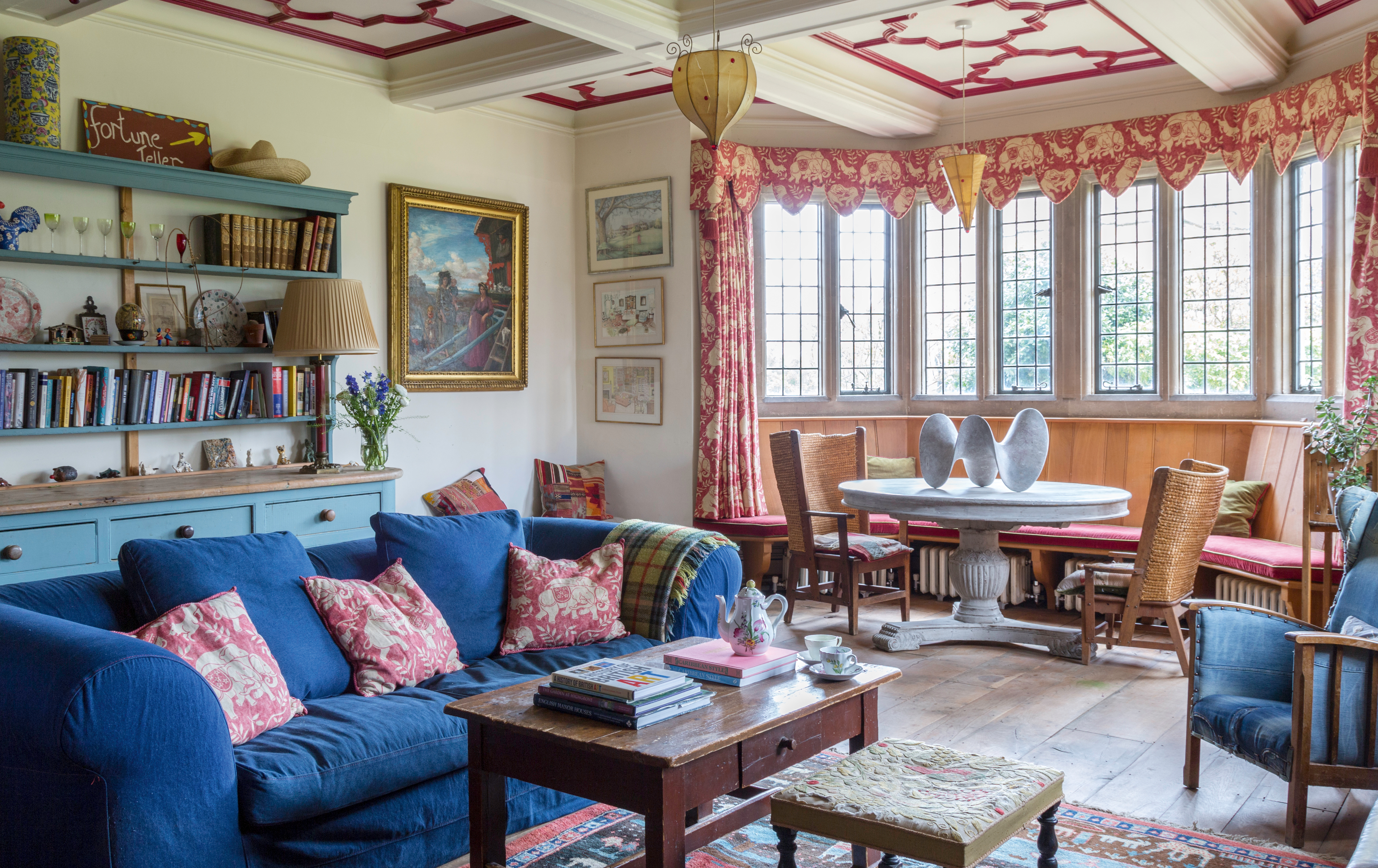
In the living room, the original ceiling cornicing is highlighted in striking claret; for similar, try Little Greene’s Theatre Red. Isabel Bannerman bought the blue dresser for Rosie’s kitchen at auction, but it didn’t fit the space. Luckily, Rosie is happy to use it here. On the table in the window is a striking sculpture by Guy Stevens, For a similar denim sofa, try Sofa.com. The cushions and curtains were made by Joanna Smith-Ryland in Jane Churchill’s Elephants fabric
Nineteen years on, and good things have been happening at Asthall Manor, which has earned itself quite a reputation for its biennial sculpture exhibition, On Form. Pieces by stone sculptors from around the world cast their spell on the garden, ballroom and the main house, against a backdrop of the most magnificent roses – an Asthall speciality.
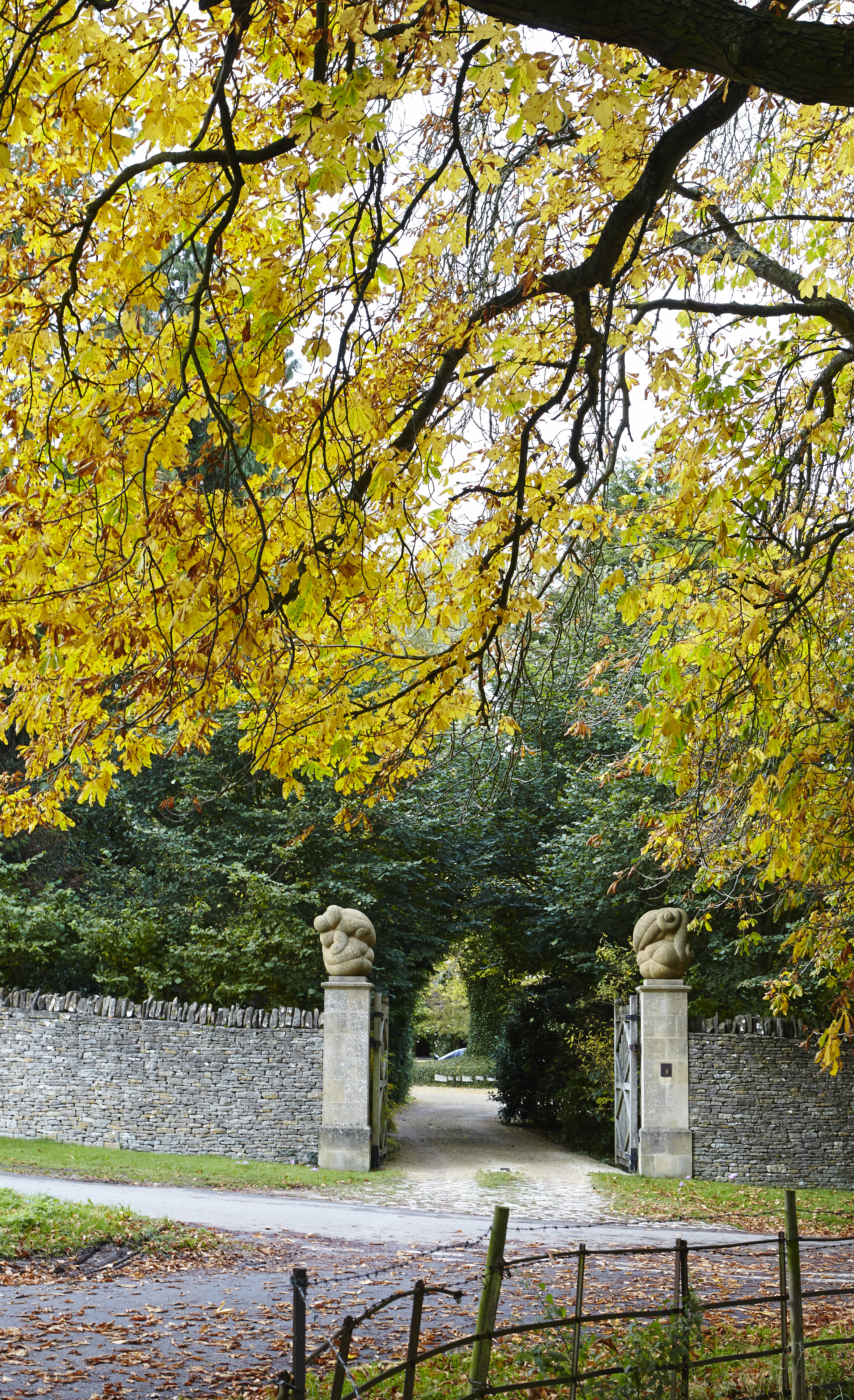
Anthony Turner's gatepost sculptures for Asthall Manor were the start of the house's long association with the world of stone sculpture
More from Period Living
Get the best period home inspiration, ideas and advice straight to your door every month with a subscription to Period Living magazine
Rosie’s love affair with sculpture began almost by accident, as she considered ways of turning the new front gateway to her home into a real statement. ‘Anthony Turner, an old school friend, had some sculptures on the back of his van when he came to stay, which he called plumpkins. And as soon as I saw them I knew I wanted something along those lines for the gateposts. It’s like a vegetable, but with a living character, I was never going to choose something ordinary.’

The grand oak staircase, with a folksy painted chair (probably Russian), a quirky tapestry found in Stow-on-the-Wold, and squirrel wallpaper by Osborne & Little
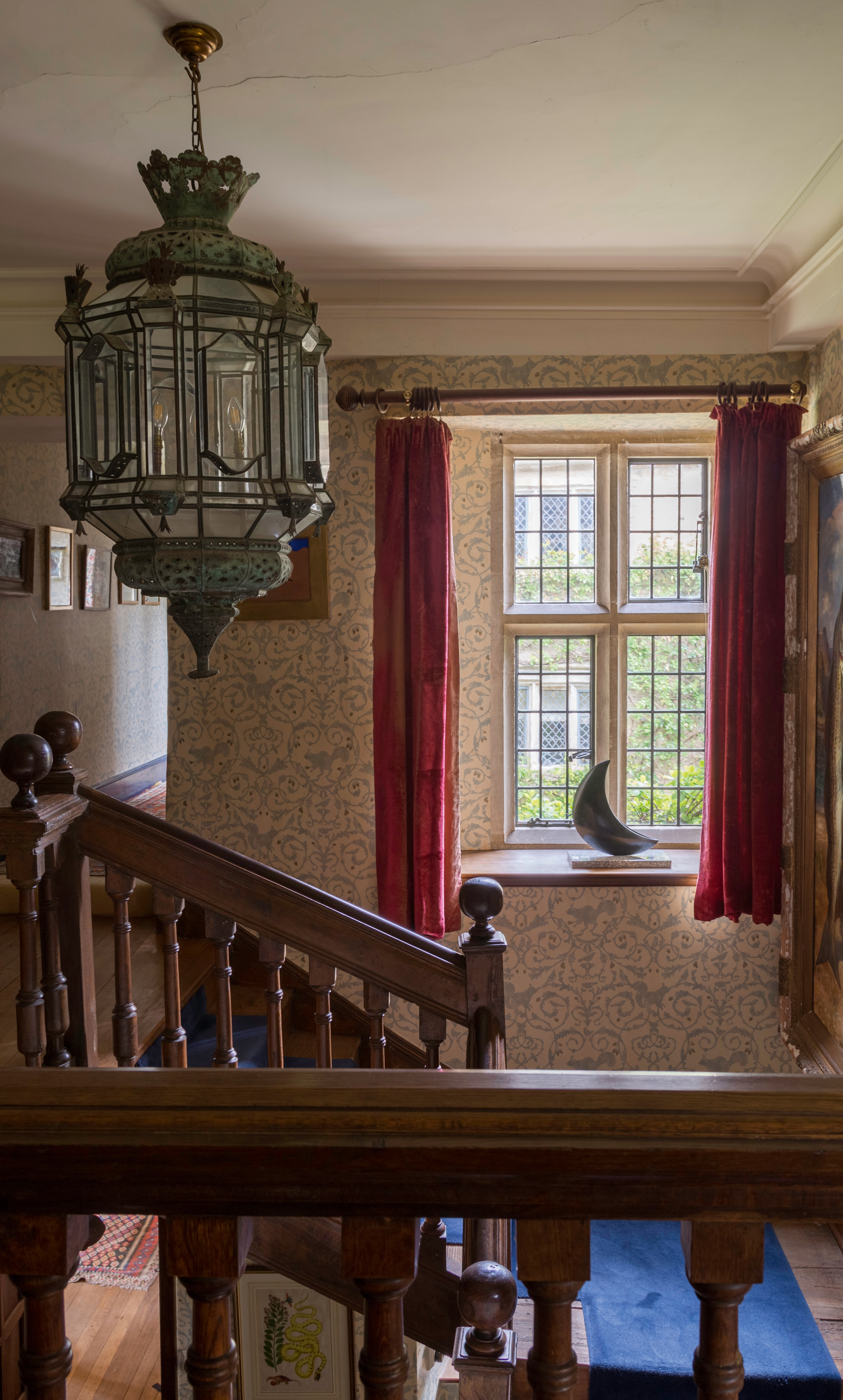
A beautiful lantern, that the Bannermans found in Turkey, lights up the stairs. On the window ledge is a sculpture by Aly Brown, entitled Dark Moon
From this, Anthony and other sculptors persuaded her that Asthall would be the perfect place to showcase new work, encourage people to look at sculpture in a new way and relax around the pieces, feeling the smoothness or roughness of the stone for themselves. ‘I said, let’s give it a go – I couldn’t live in this enormous house without finding some reason for it,’ adds Rosie.
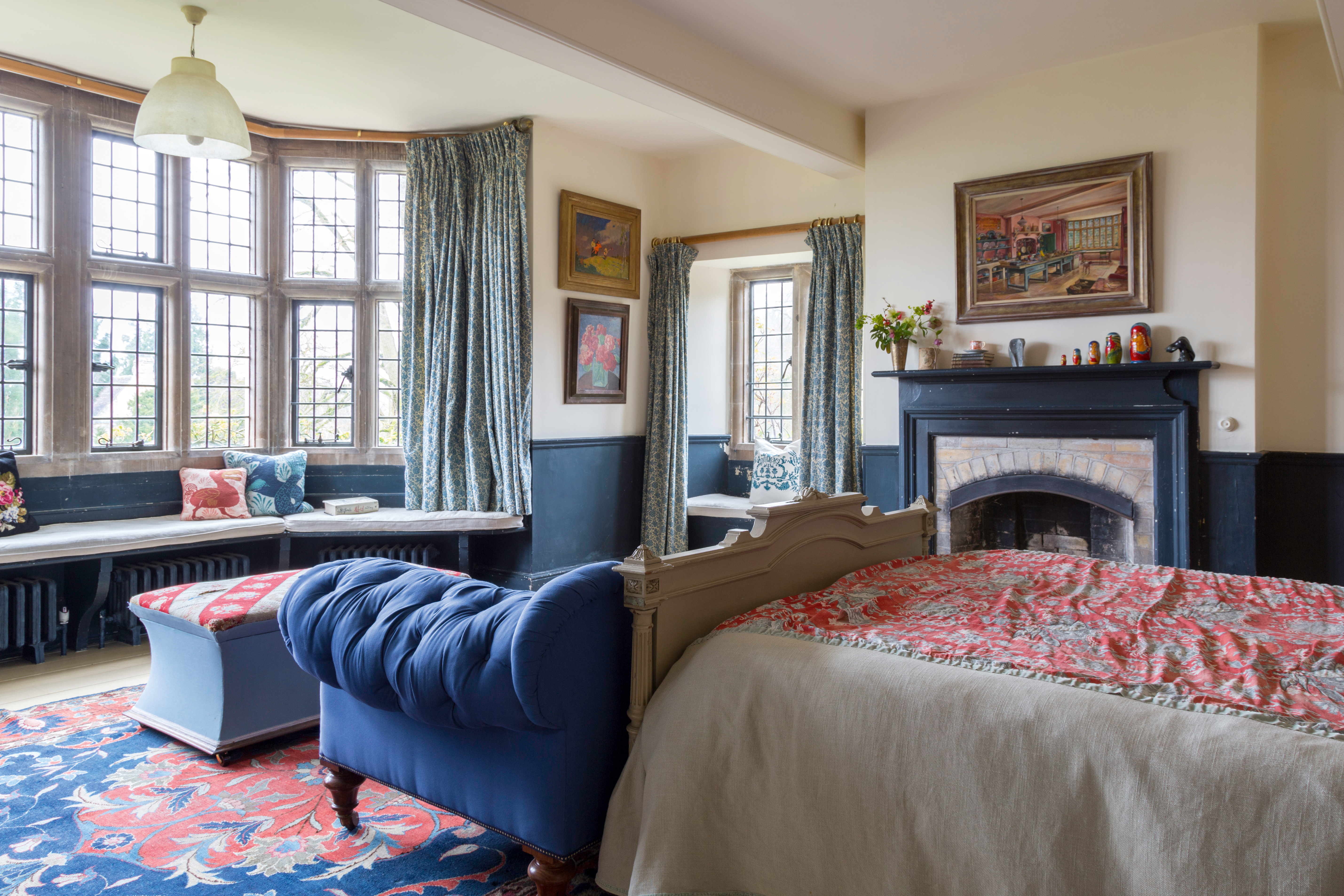
This bedroom was once the Mitfords’ schoolroom. Their governess used to shut the curtains if a funeral was taking place at the church opposite. The bed is from Seventh Heaven and was Rosie’s first internet purchase in 1999
Two years later Rosie and co-curator Anna Greenacre were welcoming visitors back, and again every two years since then. For this year's On Form, the ballroom was furnished by Lorfords Antiques. The collaboration with the antiques specialists was designed to help people to feel more comfortable around sculpture, and see it as something they can live with in their homes.
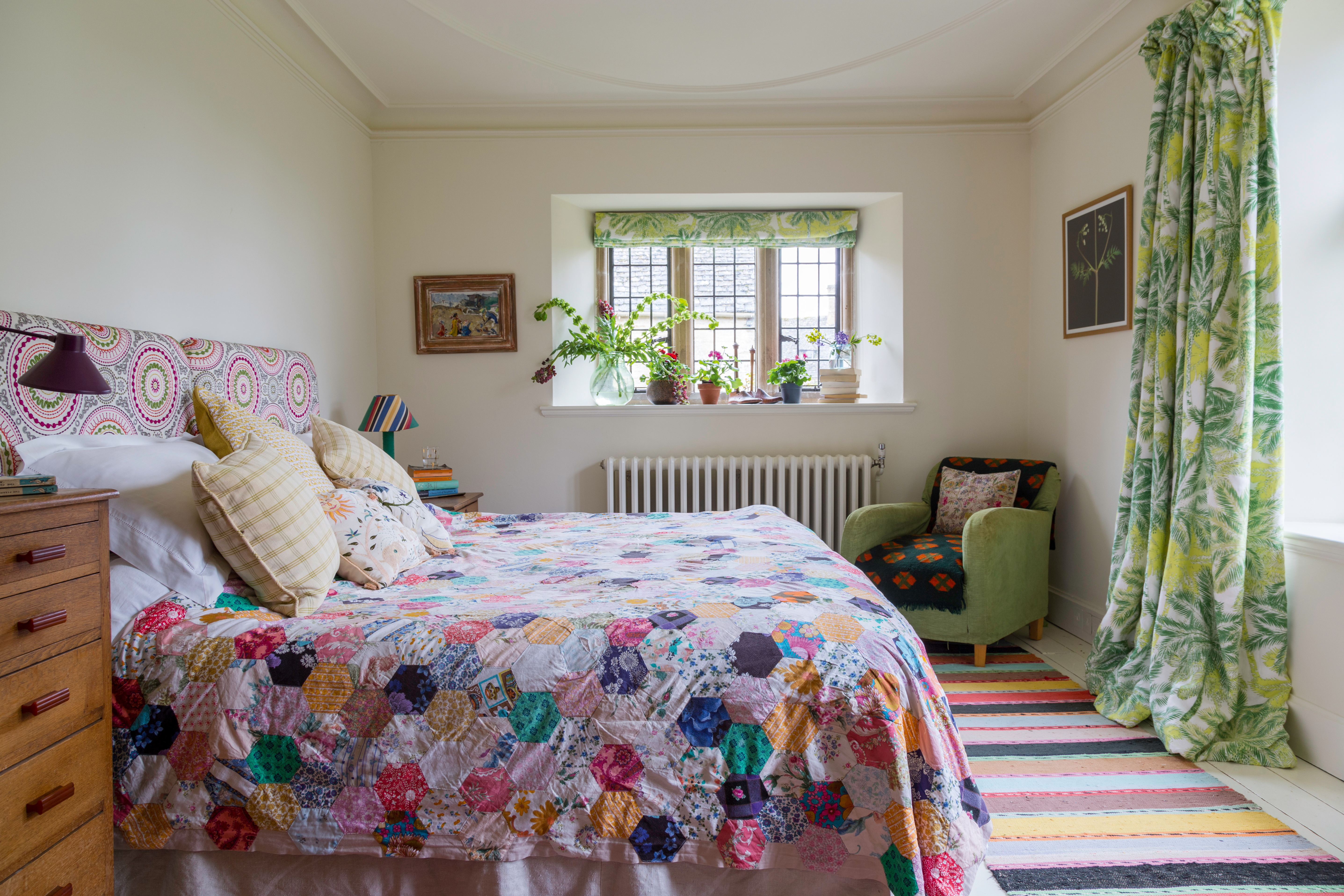
The patchwork quilt in the spare bedroom came from a junk shop in Witney. The headboards were made by Lucy Harrison Interiors, in Sweet Treat fabric by Kravet, and the curtains and Roman blind in Manuel Canovas ‘Bahamas’ fabric. The chair is from Habitat. For a similar traditional cast-iron radiator, try Period House Store. Flowers supplied by Daylesford
So what advice would Rosie give to a first- time sculpture buyer? ‘Don’t worry too much about where to put it. If you’ve fallen in love with it, buy it. Just put it down somewhere and live with it... Trust yourself and listen to it, too – really get to know it.’
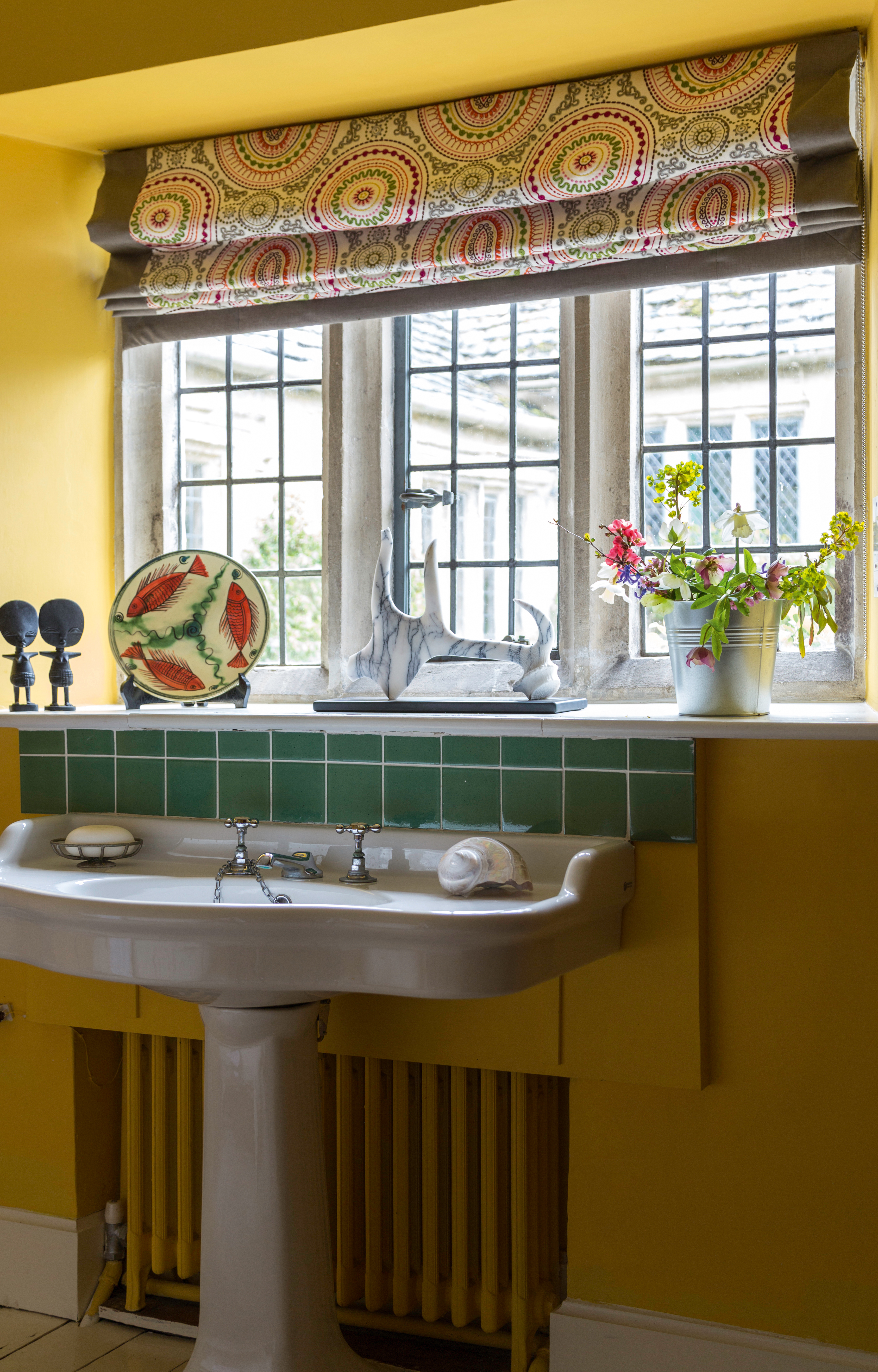
Rosie added this yellow bathroom as part of the alterations to the house. Architect Robert Franklin encouraged her to make it a spacious room. The blind is made in Sweet Treat fabric by Kravet. The sculpture on the window ledge is called Hathor, by Jason Mulligan
Rosie practises what she preaches and her daily life at Asthall Manor is lived alongside sculpture, not in a stuffy, high-end gallery way, but in a part-of-the- furniture way, and she often finds herself absent-mindedly touching a piece as she passes it. ‘That’s what they’re for, not for setting on a plinth in a big empty room.
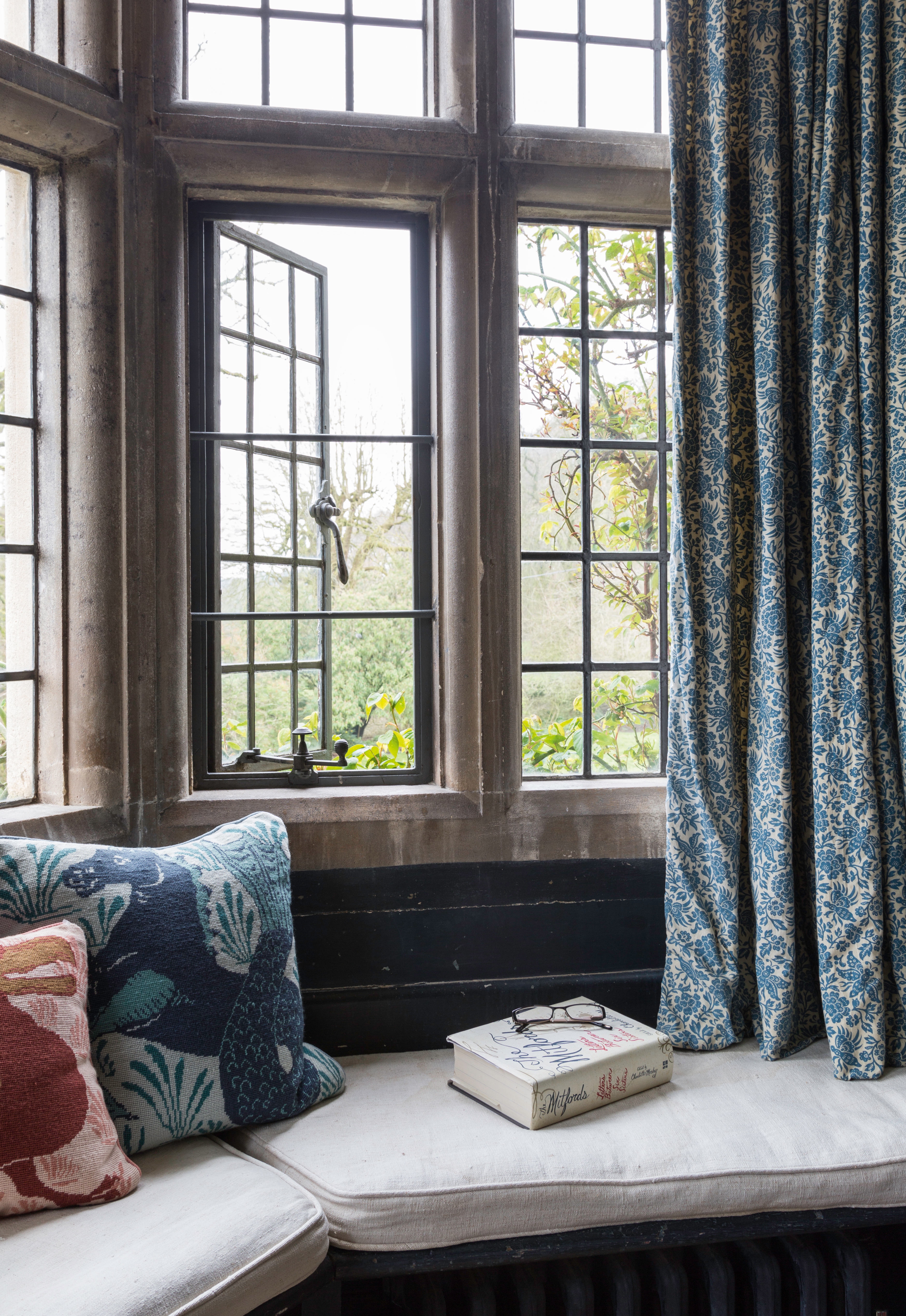
The Mitfords' former schoolroom has been turned into a bedroom
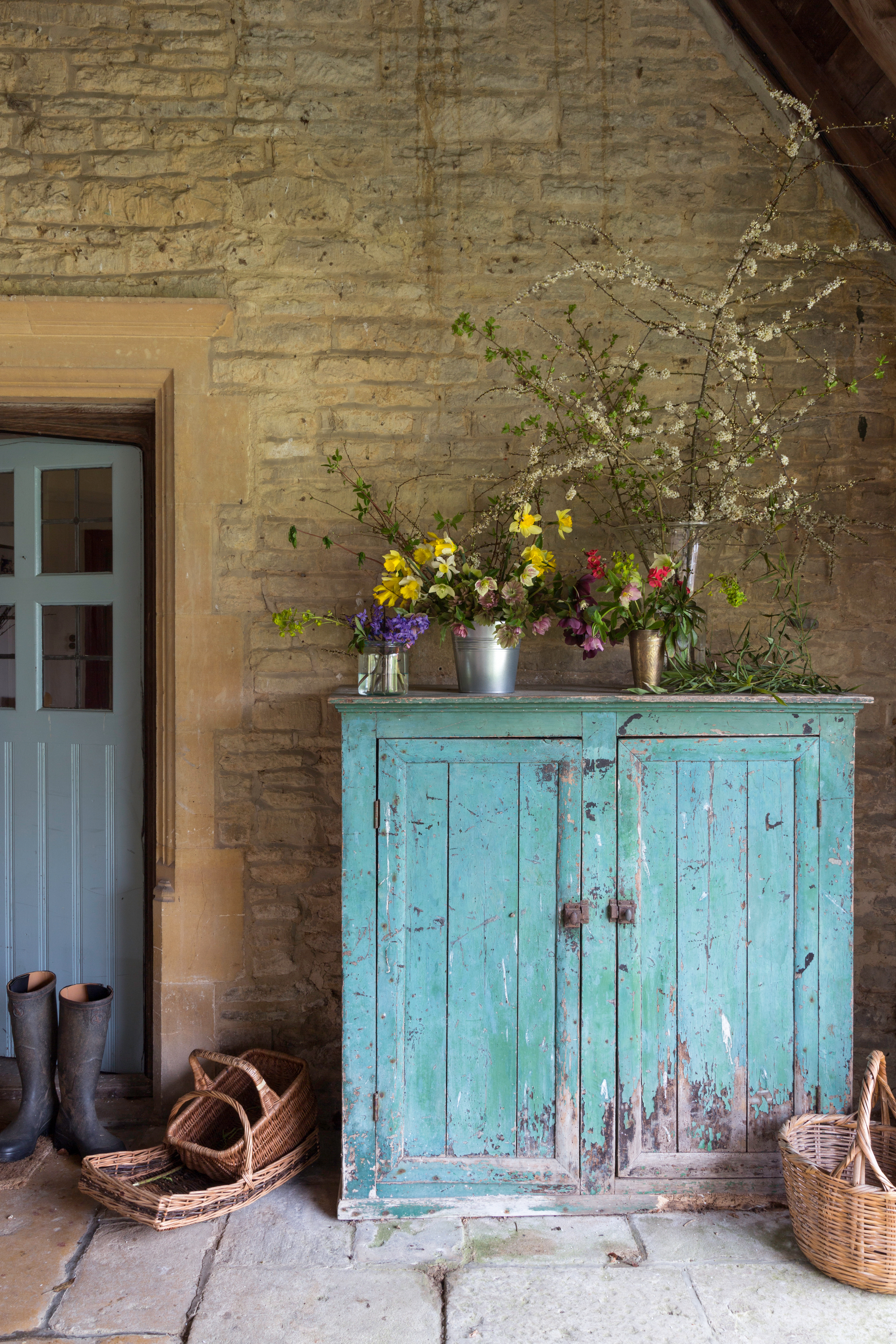
The garden door at Asthall Manor, with flowers gathered from the extensive gardens